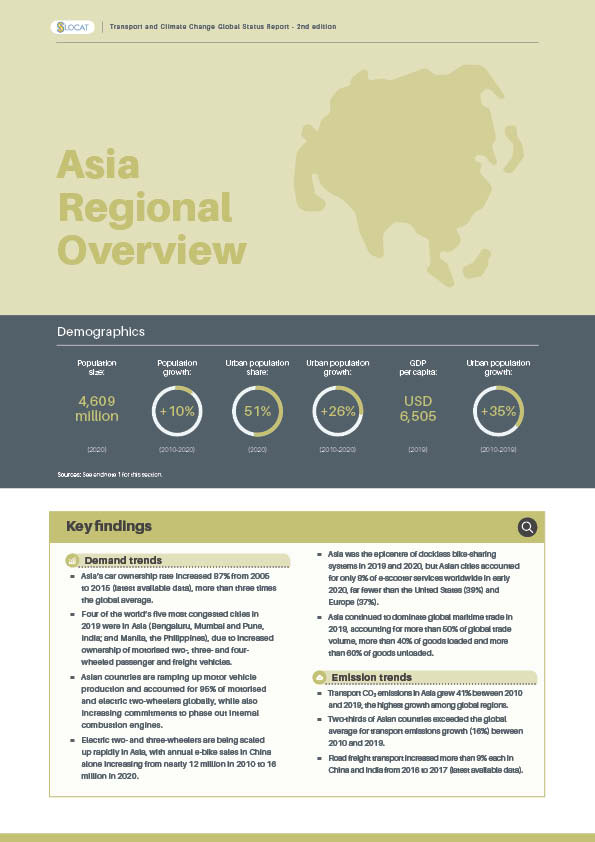Asia Regional Overview
Population size
(2020)
Population growth
(2010-2020)
%
GDP growth
(2010-2019)
%
Total vehicle sales
growth (2010-2019)
%
Total transport CO2
emissions (2019)
Share of global transport
CO2 emissions (2019)
%
Asia accounts for most of the growth in global transport demand since 2000. The region’s transport CO2 emissions also increased rapidly during this period, representing nearly 40% of the global total in 2019. Yet Asia (led by China) also has witnessed some of the strongest emission mitigation responses, leading global growth in high-speed rail, urban public transport (especially metro and bus rapid transit), fuel economy standards and bike sharing. The share of paratransit (sometimes called “informal transport”) is high in many cities, contributing to increased mobility but also greater congestion. Overall, Asia is poised to set the pace for new sustainable transport models that can be replicated across both developed and developing countries.
The needed investment in transport infrastructure to drive economic growth in Asia is an estimated USD 500 billion to USD 900 billion annually. With the demand for private transport rising, finding a balance between economic growth and mobility has proven a challenge. Opportunities in the region are mainly focused on efforts to “Improve” vehicle technologies; however, economic growth strategies in Asia must also align with “Avoid” and “Shift” measures to prevent lock-in effects.
Key Findings
-
Demand Trends
Asia’s car ownership rate increased 87% from 2005 to 2015 (latest available data), more than three times the global average.
Figure 1.
Car ownership rates per 1,000 people in Asia, 2015
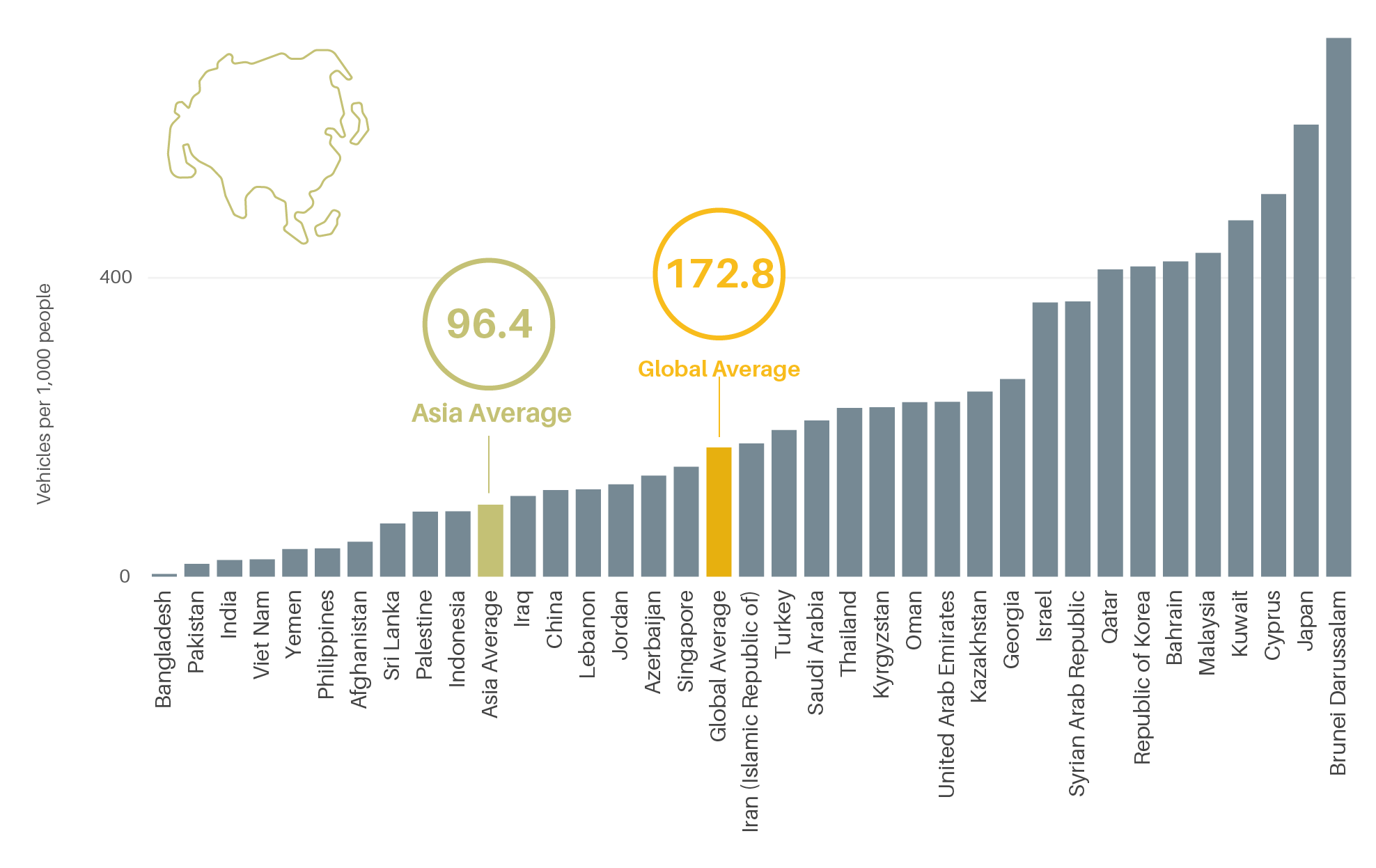
Figure 2.
Growth in car ownership in Asia, 2005-2015
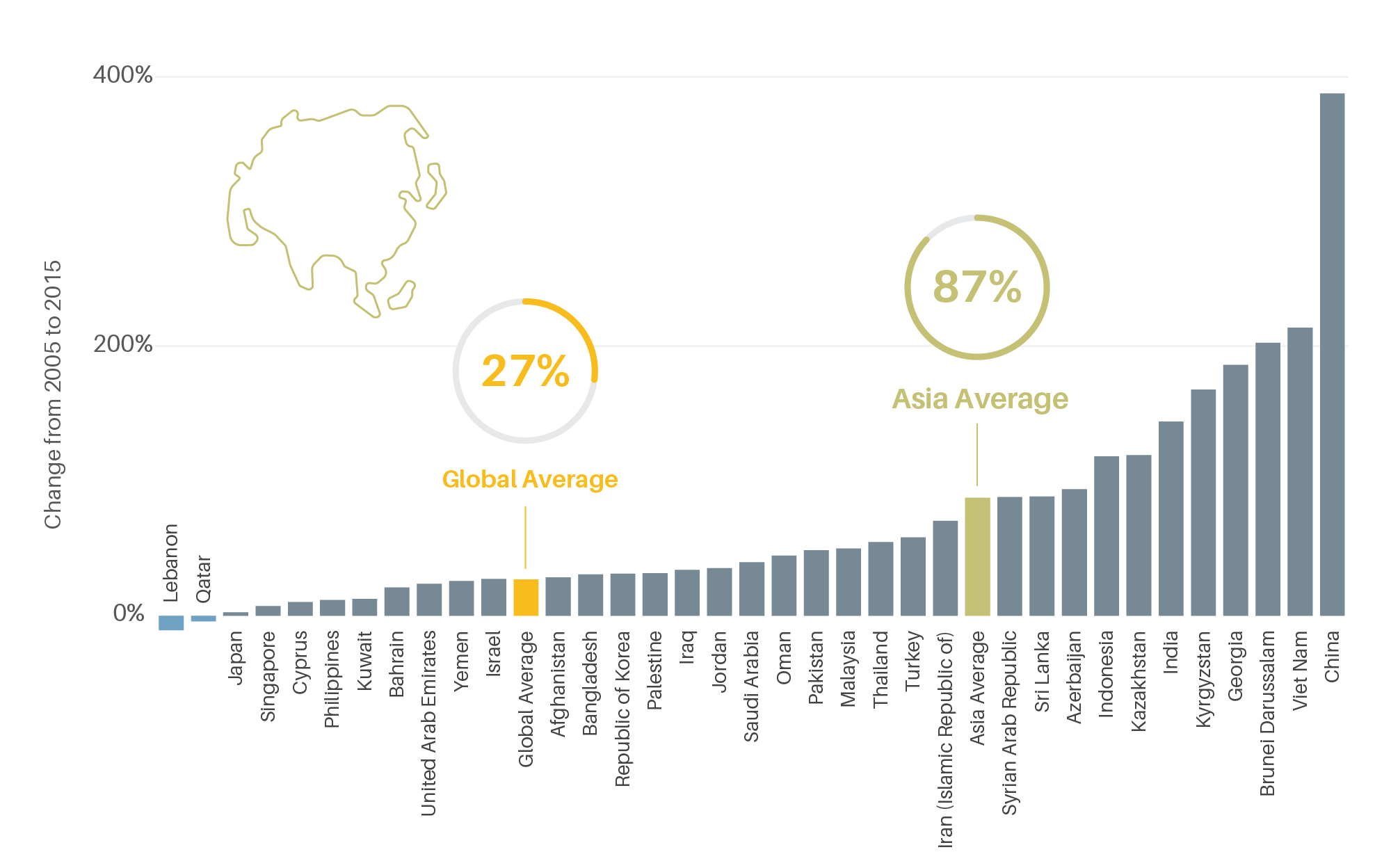
Four of the world’s five most congested cities in 2019 were in Asia (Bengaluru, Mumbai and Pune, India; and Manila, the Philippines), due to increased ownership of motorised two-, three- and four-wheeled passenger and freight vehicles.
Asian countries are ramping up motor vehicle production and accounted for 95% of motorised and electric two-wheelers globally, while also increasing commitments to phase out internal combustion engines.
Electric two- and three-wheelers are being scaled up rapidly in Asia, with annual e-bike sales in China alone increasing from nearly 12 million in 2010 to 16 million in 2020.
Asia was the epicentre of dockless bike-sharing systems in 2019 and 2020, but Asian cities accounted for only 8% of e-scooter services worldwide in early 2020, far fewer than the United States (39%) and Europe (37%).
Asia continued to dominate global maritime trade in 2019, accounting for more than 50% of global trade volume, more than 40% of goods loaded and more than 60% of goods unloaded.
-
Emission Trends
Figure 3.
Per capita transport CO2 emissions in Asia, 2019
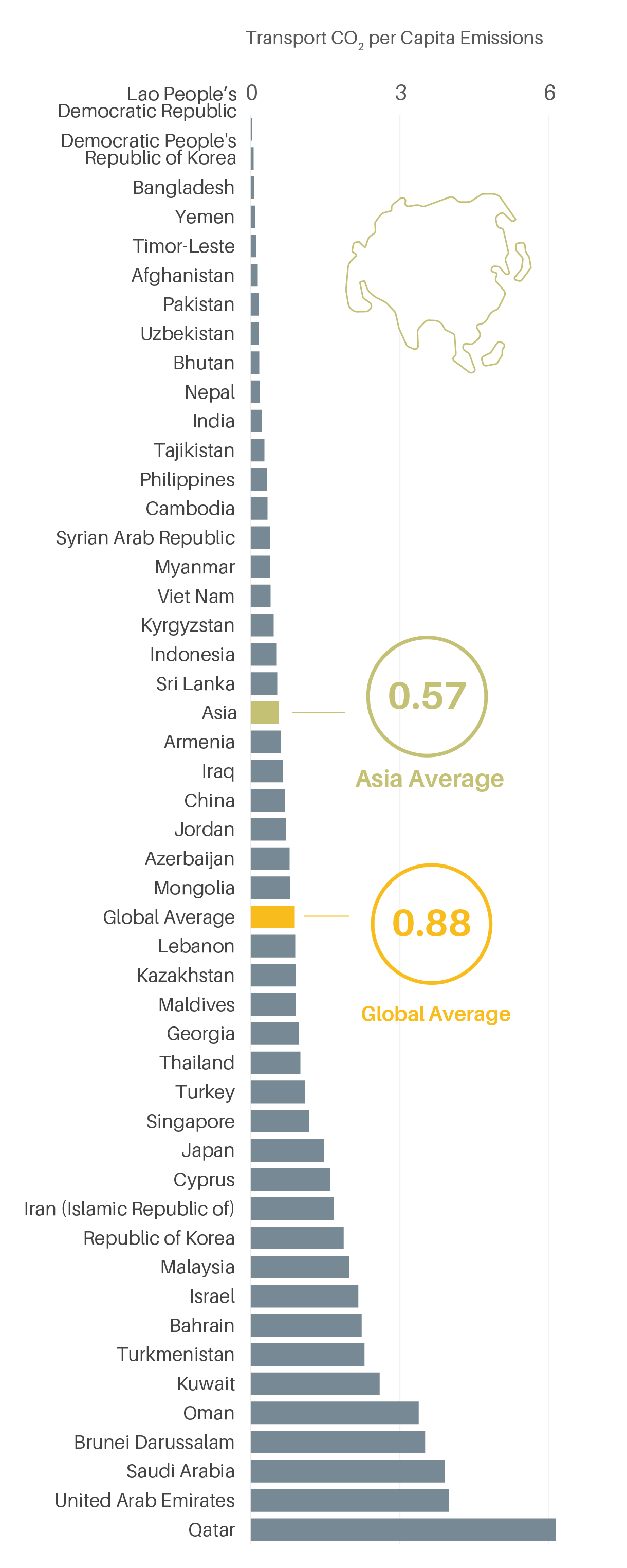
Transport CO2 emissions in Asia grew 41% between 2010 and 2019, the highest growth among global regions
Two-thirds of Asian countries exceeded the global average for transport emissions growth (16%) between 2010 and 2019.
Figure 4.
Change in transport CO2 emissions in Asia, 2010-2019
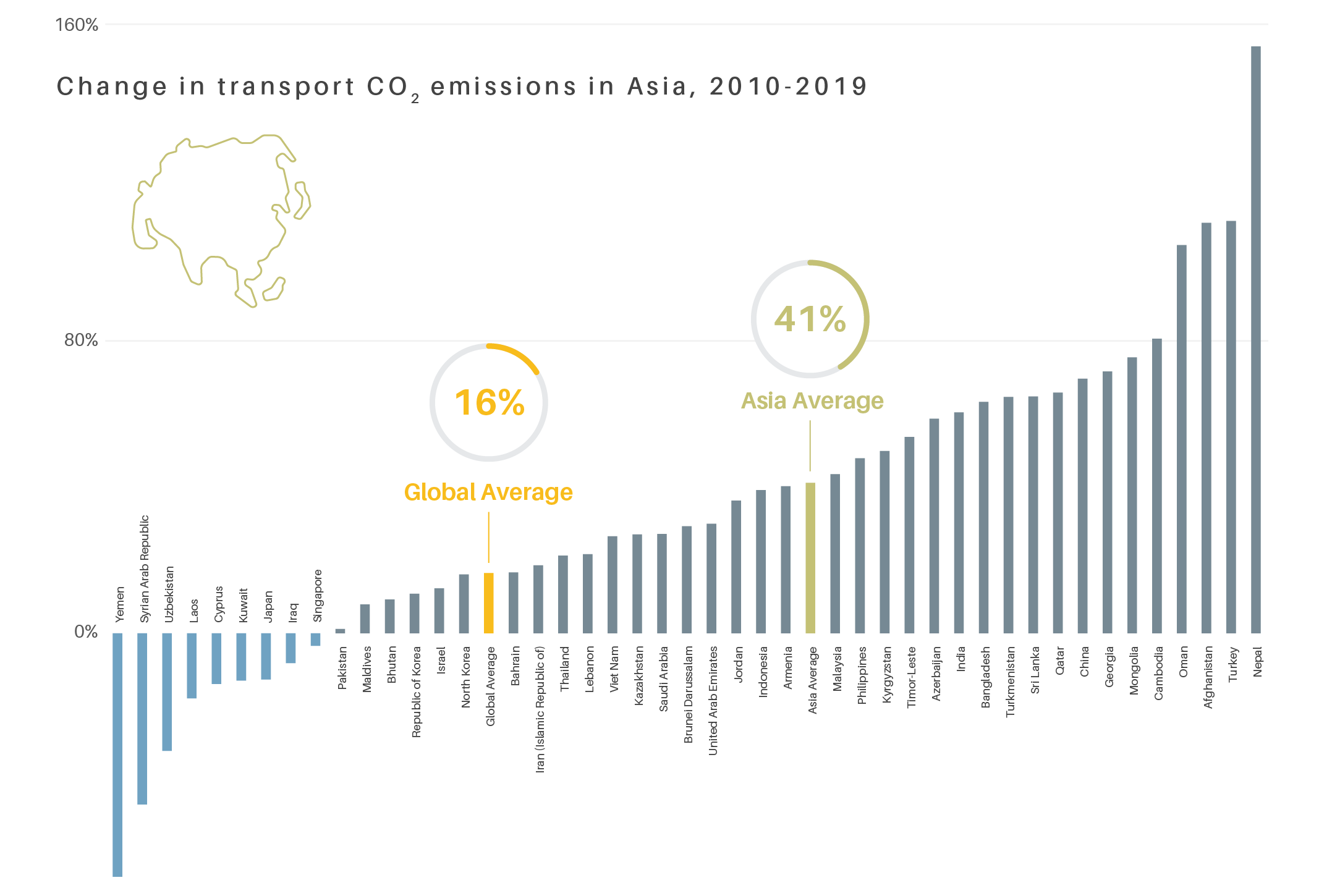
Road freight transport increased more than 9% each in China and India from 2016 to 2017 (latest available data).
-
Policy Measures
Metro rail construction and expansion in Asian cities is outpacing other regions. The Asia-Pacific region continues to invest heavily in urban rail systems and in 2018 overtook Europe in the number of new light rail projects for the first time.
China introduced up to half a million electric buses in its cities between 2015 and 2019, nearing scale, and the buses are also taking hold in neighbouring regions.
Fuel economy improvements have progressed in China, India, Japan and Saudi Arabia. Average fuel economy improved at least 3% in major Asian countries (China, India, Indonesia, Japan, Malaysia, the Philippines and Thailand) in 2017 – more than twice the global average.
Asian countries such as Indonesia, the Philippines and Singapore have introduced walking and cycling campaigns, policies and infrastructure improvements in an attempt to counteract the decline in walking and cycling in rapidly motorising countries and cities in the region.
Asian countries are advancing policy measures on low carbon freight transport, including efforts in sustainable logistics, electric freight vehicles, eco-driving (i.e., driving techniques to maximise fuel efficiency) and freight exchange platforms.
In Asia, most policies to increase the share of renewables in transport are related to biofuels, and most efforts to scale up electric vehicle uptake are not directly linked to the use of renewable energy.
-
Impacts of the COVID-19 pandemic
Public transport impacts due to the COVID-19 pandemic were less drastic in Asia compared to other world regions, and some countries witnessed rapid recoveries in demand.
Demand for shared mobility services in Asia was heavily impacted by the pandemic, resulting in reduced revenues and employment while triggering new strategies and innovation.

